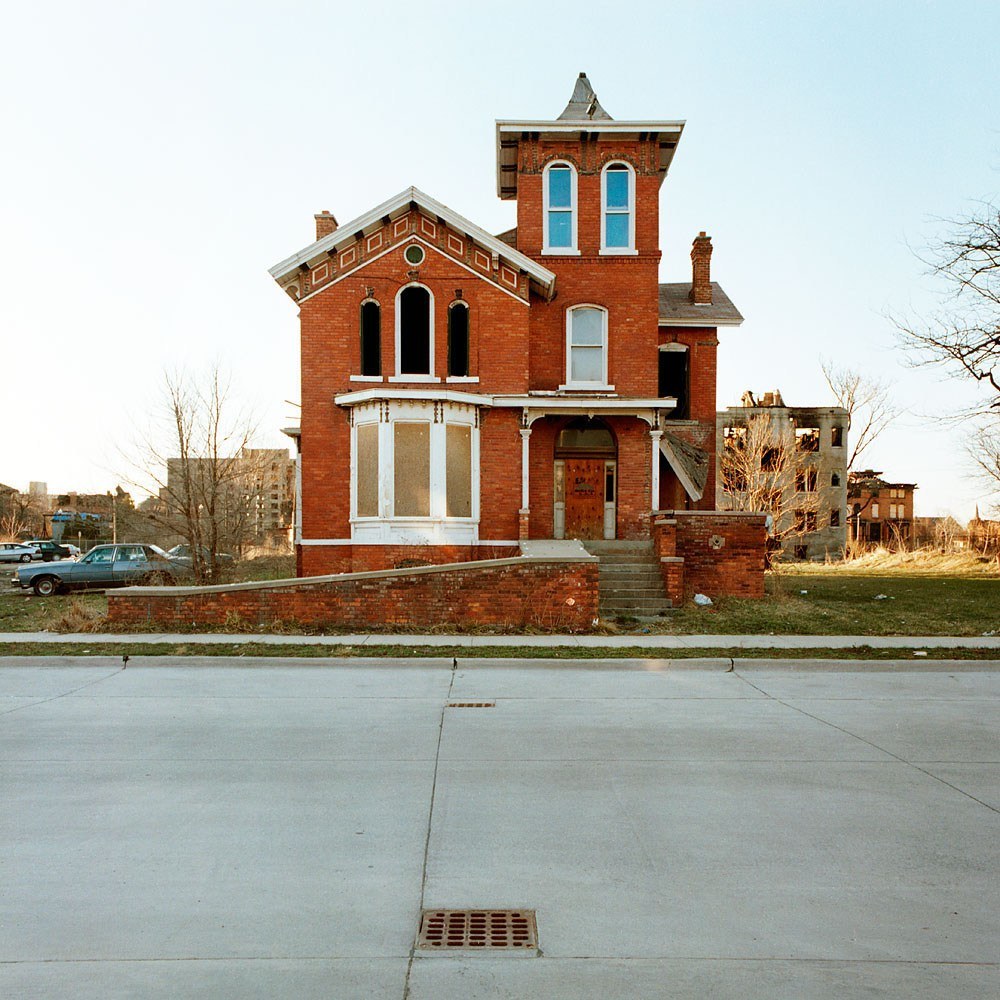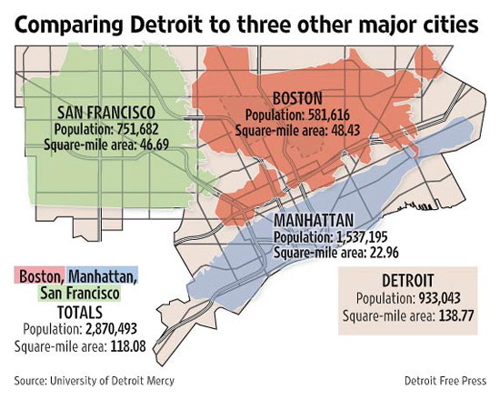(images by 100abandonedhouses)
The story of Detroit is a familiar one for anyone living in the so-called rust belt of the USA, where the once-mighty automotive manufacturing industries have left many towns and cities shadows of their former selves. Now bankrupt, Detroit’s population has halved over the last fifty years. No one actually knows just how many buildings are abandoned, but it is estimated at over 1/3 of all structures. In the midst of this urban decay, farming has started to fill the hole left by industry.
Local businessman John Hantz just bought 600,000 square meters of land from the city of Detroit with an option to buy an additional 700,000, promising to demolish all the existing (abandoned) buildings, clean up the land, and plant hardwood trees. The Bank of America announced plans to demolish 100 homes and donate the land to urban agriculture. They’re not alone, as other small-scale urban farmers are adapting what’s left of the city to meet their needs. Detractors are quick to point out that urban farming will never be a large-scale, mass-produced operation that could compete with big agriculture, but urban farmers have a different goal in mind. Greg Willerer of Detroit says that he isn’t trying to save the world, just to save his city.


Encompassing an area of over 138 square miles, Detroit has enough room to hold the land mass of San Francisco, Boston, and Manhattan Island, yet the population has fallen from close to 2 million citizens, to most likely less than 800,000. With such a dramatic decline, the abandoned house problem is not likely to go away any time soon.


The story of Detroit is a familiar one for anyone living in the so-called rust belt of the USA, where the once-mighty automotive manufacturing industries have left many towns and cities shadows of their former selves. Now bankrupt, Detroit’s population has halved over the last fifty years. No one actually knows just how many buildings are abandoned, but it is estimated at over 1/3 of all structures. In the midst of this urban decay, farming has started to fill the hole left by industry.
Local businessman John Hantz just bought 600,000 square meters of land from the city of Detroit with an option to buy an additional 700,000, promising to demolish all the existing (abandoned) buildings, clean up the land, and plant hardwood trees. The Bank of America announced plans to demolish 100 homes and donate the land to urban agriculture. They’re not alone, as other small-scale urban farmers are adapting what’s left of the city to meet their needs. Detractors are quick to point out that urban farming will never be a large-scale, mass-produced operation that could compete with big agriculture, but urban farmers have a different goal in mind. Greg Willerer of Detroit says that he isn’t trying to save the world, just to save his city.


“For all intents and purposes, there is no government here,” says Willerer. While Detroit’s story is unique for now, the finances of other similarly affected cities may mean that the Motor City won’t be alone in its misery for long. Detroit’s urban farmers are helping to make the city more self-sufficient even when its own government has given up.






Viendo este artículo parece claro que también habrá que aprender a encoger las ciudades.
ResponEliminaEs un caso muy interesante del que no sabía gran cosa. Gracias por compartirlo. A.T.
gracias AT. Esta cuestión es difícil pero necesaria. Además, viendo el mapa de población de Detroit (1), parece que no se trata tanto de reducir los límites externos de la ciudad, sino más bien de separarla en comunidades autónomas separadas por espacios libres. ¿Libres? quizás una de las preguntas que es necesario plantear es cómo son esos espacios y a qué se dedican. seguiremos.
Elimina(1)
http://4.bp.blogspot.com/_b5jZxTCSlm0/S-arMVkGlnI/AAAAAAAAE8s/6jrr7OShkh0/s1600/Detroit+Population+Density+Per+Acre.JPG